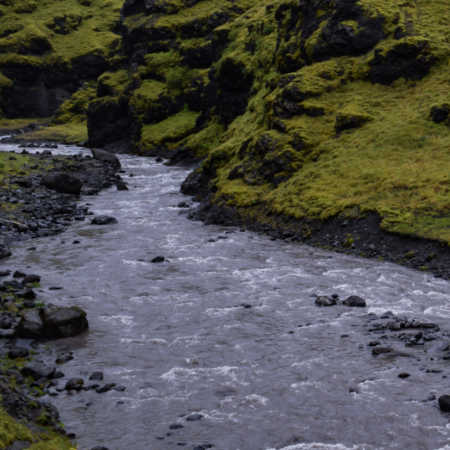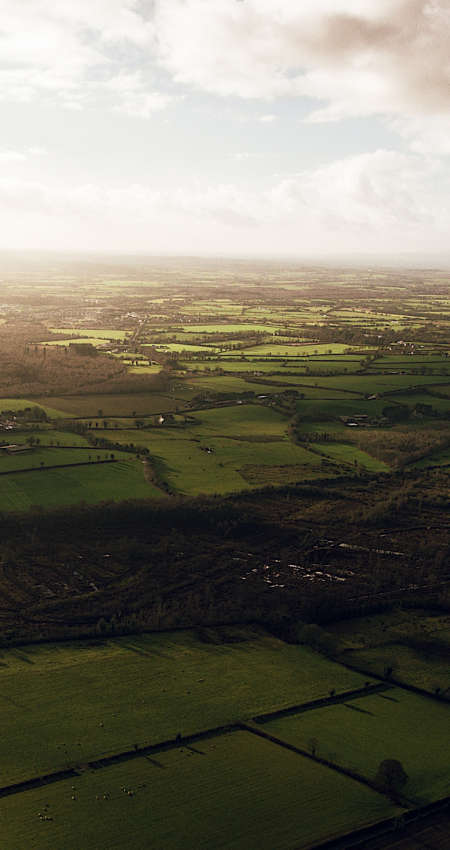Farmland
As a largely rural and agricultural county, much of Roscommon’s biodiversity is found on farms, particularly on marginal land like hedgerows and rough grassland. Arable fields, trees, scrub, ponds and streams are havens for wildlife such as hares, stoats, badgers, hedgehogs and frogs as well as many birds and insects.
Rivers, lakes and other watery places
Roscommon has many wet and watery places that are great for nature and wildlife. Rivers, streams and lakes are hugely important for biodiversity and recreation. Many types of fish, birds, invertebrates and plants can be found in and around Roscommon’s rivers and lakes. The River Shannon is the longest river in Ireland and, along with Lough Ree, forms the eastern boundary to the county.
The River Shannon contains many habitats of value for wildlife along its length, most notably the Shannon callows. Callows are a type of wet grassland or meadow that occurs in the floodplains of large rivers. They are composed of tall grasses and herbs such as reed canary grass, meadowsweet, ragged robin, and various sedges and rushes. These wet grassy places provide wonderful nesting and foraging habitats for birds. One of the rarest birds in Ireland, the corncrake, nests in callows faces extinction ireland.

Lough Ree is the third largest lake in Ireland. As one of the most important sites for wintering and breeding birds in the midlands, Lough Ree is designated as a Special Protection Area. Nationally important populations of several birds have been recorded on the lake including Wigeon, Teal, Golden eye and Tufted duck.
Other important species, Greenland white-fronted geese, Whooper swan and Common tern are also found in and around the lake. There are a large number of other lakes in Roscommon, especially in the northern and north-eastern corner of the county.
These include Lough Key, part of Lough Allen, Lough O’Flynn, Lough Meelagh, Lough Boderg, Lough Bofin and more. Rivers and lakes often have other habitats associated with them that tend to be a transition between the open water of the river or lake, and dry land which adds to the diversity of wildlife.

Wetlands
Rivers, lakes, ponds, turloughs, reservoirs, floodplains, bogs, fens, marsh, swamp, wet woodlands and peatlands are all types of wetlands found in Roscommon. Many birds, fish, invertebrates, small mammals and plants live in and around wetlands, which are productive habitats and therefore support a vast array of wildlife.
Turloughs
Turloughs are unique to Ireland, are often associated with limestone areas and occur mostly in the western counties including Roscommon. Turloughs are temporary water bodies that are filled and emptied though a swallow hole that is connected with the underground water table. Turloughs are usually filled during the winter and wetter months of the year.
They are very important for over-wintering birds. Roscommon has some wonderful examples of turloughs and many have been designated for nature conservation due to their exceptionally high quality and value for birds and wildlife including turloughs at Ballinturly, Coolcam Turlough, Four Roads, Lisduff and Castleplunket.
Bogs
Both raised bogs and blanket bogs can be found in Roscommon. Bogs are a type of peatland that usually have a mix of sedges, rushes, bog mosses and heathers growing on them. Peat builds up under waterlogged and acidic conditions to form bogs.
Blanket bog is found on Kilronan and Corry mountains, both designated as Natural Heritage Areas, but there are several raised bogs in Roscommon although they are now very rare in the rest of Europe.
The bogs are home to an abundance of weird and wonderful wildlife including insects, butterflies and rare and threatened bird species. One of Europe’s rarest butterflies is found on peatlands in Roscommon, the Marsh fritillary butterfly.
Back Home